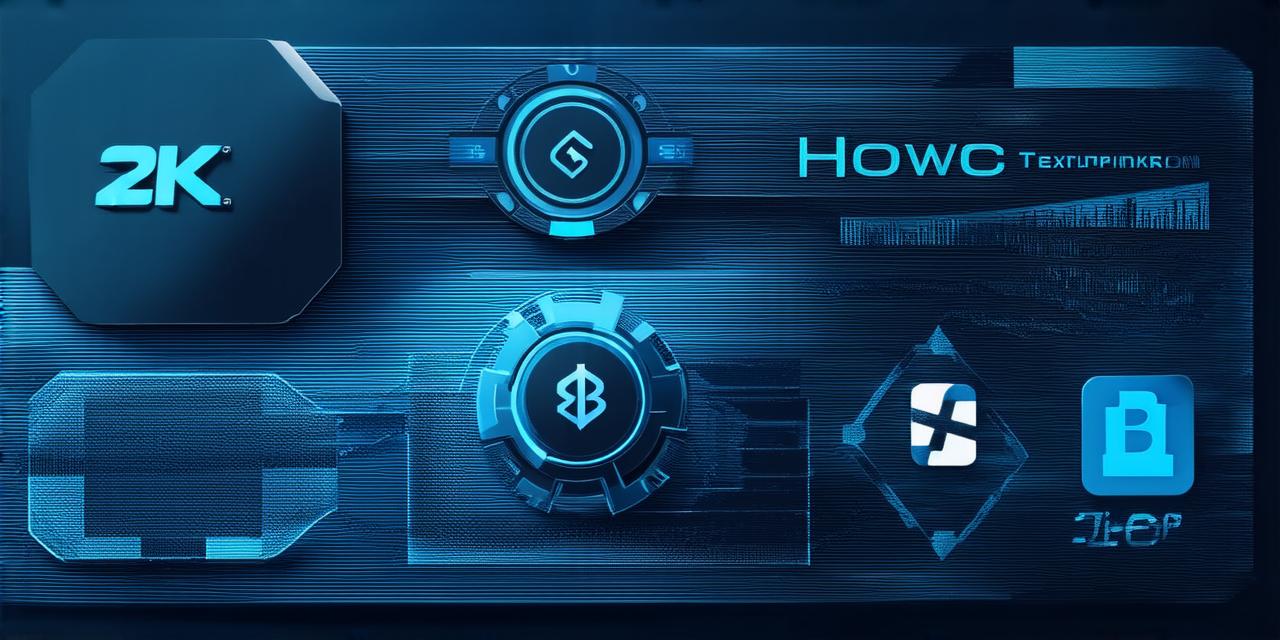Introduction:
Blockchain technology is one of the most disruptive innovations in recent times. It was first introduced in 2008 with the creation of Bitcoin, a decentralized digital currency that operates on a peer-to-peer network.
Since then, blockchain has been used for various applications such as supply chain management, voting systems, and identity verification.
What is Blockchain Technology?
Blockchain technology is a decentralized, distributed ledger that records transactions across multiple computers in a secure and transparent manner. It allows for the creation of a tamper-proof and immutable record of all transactions that take place on the network.
History of Blockchain Technology:
The concept of blockchain technology dates back to 1976 when computer scientists Stuart Haber and David Clarke proposed a decentralized digital cash system that would allow for secure and private transactions without the need for intermediaries.
However, it wasn’t until 2008 that blockchain technology was brought to life with the creation of Bitcoin by an anonymous individual or group using the pseudonym Satoshi Nakamoto.
How does Blockchain Technology Work?
At its core, blockchain technology is based on the principles of decentralization, transparency, and immutability. Decentralization means that there is no central authority controlling the network; instead, transactions are verified and validated by a distributed network of computers.
Transparency means that all participants can see a complete and unaltered record of all transactions that take place on the network.
Immutability means that once a transaction is recorded on the blockchain, it cannot be changed or deleted.
The process of creating a new block on the blockchain involves several steps:
-
Transactions: These are the individual units of data that are being recorded on the blockchain. For example, when you send Bitcoin to someone, a transaction is created that records this transfer of funds.
-
Mining: This is the process by which new blocks are created and added to the blockchain. Miners compete with each other to solve complex mathematical problems that validate transactions and add them to the blockchain. In return for their work, they are rewarded with a certain amount of cryptocurrency.
-
Consensus: Before a new block can be added to the blockchain, it must be verified by the majority of the network participants. This is known as consensus. Once consensus is reached, the new block is added to the chain, and the process starts over again with new transactions.
-
Blockchain: The blockchain is the chain of blocks that contains all the recorded transactions on the network. Each block contains a list of transactions and a reference to the previous block in the chain, creating a secure and tamper-proof record of all transactions that take place on the network.
Case Studies and Personal Experiences:
One of the most well-known applications of blockchain technology is Bitcoin, which has revolutionized the way people store and spend money. Another application of blockchain technology is supply chain management. Companies can use blockchain to create a transparent and tamper-proof record of their supply chain, allowing them to track products from production to delivery and ensuring that they are ethically sourced and produced.
Personal experiences of working with blockchain technology are limited, but many developers have reported that it can be challenging to work with due to its complex nature and the need for a high level of technical expertise. However, once developers become familiar with the technology, they find it to be highly rewarding and exciting to work with.
Research and Experiments:
Several studies and experiments have been conducted on blockchain technology to understand its potential applications and limitations. One such study found that blockchain technology can significantly reduce transaction costs in cross-border payments by eliminating intermediaries such as banks.
Another experiment found that blockchain technology can be used for secure and efficient identity verification, which could have significant implications for the future of online security.
Main Idea:
The main idea of this article is to provide a comprehensive guide to blockchain technology for developers. We have covered the basics of blockchain technology, its history, and how it works. We have also discussed some of its applications and limitations through case studies and personal experiences. Finally, we have highlighted some research and experiments that have been conducted on blockchain technology to provide a deeper understanding of its potential applications.
Comparisons and Figurative Language:
Blockchain technology can be compared to a digital ledger that records all transactions on the network. It is like a notebook that contains a list of all the things that you have done since you started using it. Just as you cannot change what you have written in your notebook, you cannot change what has been recorded on the blockchain.
Another comparison can be made between blockchain technology and a chain of blocks. Each block contains a list of transactions, which are linked together using cryptographic algorithms. This creates a chain of blocks that is secure and tamper-proof.
FAQs:
1. What is the difference between blockchain and Bitcoin?
Blockchain is the technology behind Bitcoin, while Bitcoin is a specific application of blockchain technology. Bitcoin is a decentralized digital currency that operates on a peer-to-peer network, while blockchain technology can be used for various applications such as supply chain management and identity verification.
2. How does consensus work in blockchain?
Consensus is the process by which new blocks are added to the blockchain. It involves the verification of transactions and the addition of them to the blockchain by a distributed network of computers. Once consensus is reached, the new block is added to the chain, and the process starts over again with new transactions.
3. What are some applications of blockchain technology?
Blockchain technology can be used for various applications such as supply chain management, voting systems, and identity verification. It has the potential to revolutionize many industries, including finance, healthcare, and real estate.
4. What are the limitations of blockchain technology?
One of the main limitations of blockchain technology is its scalability. The current blockchain networks can only handle a limited number of transactions per second, which can be a problem for applications that require high levels of throughput.
Another limitation is its complexity, which requires a high level of technical expertise to work with.
5. How does mining work in blockchain?
Mining is the process by which new blocks are created and added to the blockchain. Miners compete with each other to solve complex mathematical problems that validate transactions and add them to the blockchain. In return for their work, they are rewarded with a certain amount of cryptocurrency.
Summary:

Blockchain technology is a highly exciting and rapidly evolving field that has the potential to revolutionize many industries. While it can be challenging to work with due to its complexity, once developers become familiar with the technology, they find it to be highly rewarding and exciting to work with. As blockchain technology continues to develop, we can expect to see new applications and limitations emerge, making it an area of constant research and experimentation.
